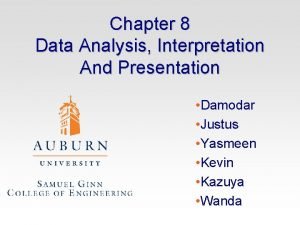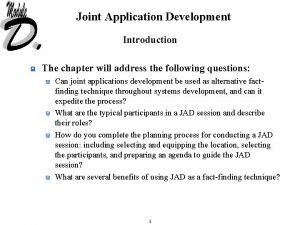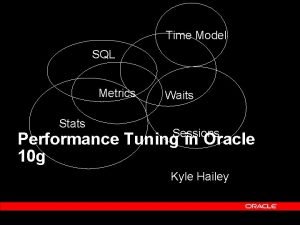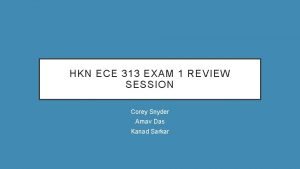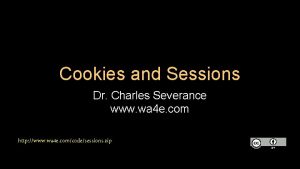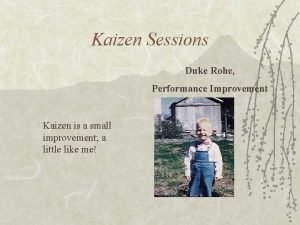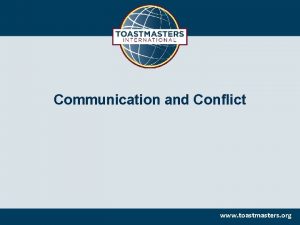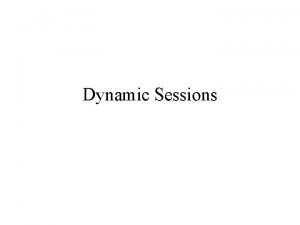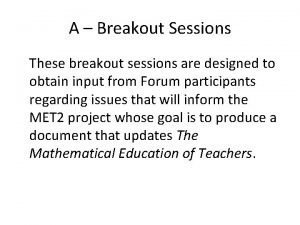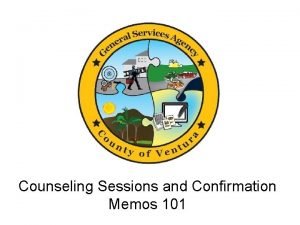Sessions 212223 UNDERSTANDING CONFLICT What is Conflict When



![Types of Conflict Ø Task Conflict [~Arjuna in Mahabharata] – Conflicts over content and Types of Conflict Ø Task Conflict [~Arjuna in Mahabharata] – Conflicts over content and](https://slidetodoc.com/presentation_image_h/0a7892c13221286cc0a0517da4f9fb41/image-4.jpg)









- Slides: 13

Sessions 21/22/23 UNDERSTANDING CONFLICT

What is Conflict? Ø When one party perceives that another party has negatively affected, or Ø is about to negatively affect, CONFLICT starts! Conflict may happen due to; - Incompatibility of goals - Differences over explanations of facts - Disagreements based on behavioral expectations - Individual vs. Individual(s) or vs. Organization

Forms of Conflict Functional Conflict • Conflict that supports the goals of the group and improves its performance. • When Level of Conflict is neither too low nor too high, but maintained at optimum. Dysfunctional Conflict • Conflict that hampers Grp. performance • When Level of Conflict is too low or high • When it originates from bad relationship
![Types of Conflict Ø Task Conflict Arjuna in Mahabharata Conflicts over content and Types of Conflict Ø Task Conflict [~Arjuna in Mahabharata] – Conflicts over content and](https://slidetodoc.com/presentation_image_h/0a7892c13221286cc0a0517da4f9fb41/image-4.jpg)
Types of Conflict Ø Task Conflict [~Arjuna in Mahabharata] – Conflicts over content and goals of the work – Low-to-moderate - FUNCTIONAL Ø Process Conflict [~Satyam---] – Conflict over how work gets done – Low levels - FUNCTIONAL Ø Relationship Conflict [~Mamata--] – Conflict based on interpersonal relationships – Almost always - DYSFUNCTIONAL

The Conflict Process – its 5 Stages Stage I Potential Causes: ==== - Commn. -Structure - Personal variables Stage II Cognition & Personalization: ==== - Perceived Conflict - Felt Conflict Stage III Conflict Handling Styles and Intentions: ====== - Avoiding - Accommodating - Competing - Cooperating - Collaborating Stage IV Expressed Or Overt Behavior : ==== - Conflicting Parties’ Behavior - Others’ Reactions Stage V Outcomes: ===== - Enhanced Team Performance - Deteriorated Team Performance

Dimensions of Conflict-handling Intentions Ø COMPETING (emergencies) - “Win-Lose” Strategy - Assertive & Uncooperative Ø COLLABORATING (integrative) - “Win-Win” Strategy - Assertive & Cooperative Ø COMPROMISING (mod. priorities) - “Win-some Lose-some” Strategy - No clear winner or loser & give-up Ø ACCOMMODATING - “Lose-Win” Strategy (if U’re wrong) - Unassertive & Cooperative Ø AVOIDING (trivial issues) - Withdrawal from the situation - Unassertive & Uncooperative

Orientations for Handling Conflicts 1. What is Your Underlying Conflict Handling Style - Self-awareness, Your basic/preferred style. 2. Be judicious in Selecting the Conflicts that you want to handle - Select that important conflict which you can handle 3. Evaluate the Conflict Players - Identifying Functional Players and their personalities & interests 4. Assess the Source of the Conflict - Cause Analysis: Communication, Structural or Personal Differences - Communication Diff. : Semantic Issues, Noise, Channel or No comm. - Structural: Promotions, Pay-hikes, Additional Staff, Office Space - Personal: Background, Education, Experience & Personal Issues 5. Know Your Options & Intentions - Competition, Collaboration, Compromise, Accommodation, Avoidance

Understand Your Conflict Management Style EXERCISE

Understand Your Conflict Management Style Serial # 01 CMS Competing Collaborating Compromising Avoiding Accommodating 01 02 03 04 05 B A 02 B 03 04 A B B A 05 06 A A A B 09 A 10 13 14 B A B B A 11 12 B B 07 08 A A B B A

15 A 16 B A B 17 A 18 19 B A B 20 B A 21 A B 22 B A 23 A B 24 25 B A Total Competing Avoiding Collaborating CMS Compromising Accommodating

What is Negotiation? Ø A process in which two or more parties exchange goods or services and attempt to agree on the exchange rates and terms among them. Negotiation may happen through: Ø Distributive Bargaining (~zero sum, win-Lose, fixed pie, competitive) – e. g. most labor union settlements, and buying/selling instances) Ø Integrative Bargaining (~synergistic, win-win, >>pie, collaborative) – e. g. when an orgn. promotes self-employment while down-sizing Ø Third Party Negotiation: - e. g. Mediator (~Krishna@Kauravas), Arbitrator (~ID Act), Conciliator (~Deepak Paikh for Ambanis), Consultants (~US Lobbyists). Should the bidding be ‘anchored’ High in an Auction? Ø No, it’s a myth not true in auctions (ref. e-bay) Ø On the contrary, starting low generated higher final prices!

The Negotiation Process – its 5 Steps Ø Preparation and Planning: - Gather Data, Define your Resistance Point, estimate your BATNA, Develop your Strategy, Plan for the ‘Meeting’ Ø Define Ground Rules / Exchange Initial Positions: – Players, Procedure, Location, Date/Time, Boundaries, ‘Impasse? ’ Ø Clarification and Justification: – Explain, amplify, clarify, bolster and justify your original demands – Should be educational and evidential, not confrontational. Ø Bargaining and Problem-Solving (i. e. Objection Handling): - Give-and-take to reach an agreement; - Crux of negotiation process, each party making concessions Ø Closure and Implementation: - Seal the deal, i. e. formalize the agreement; - Draw the Implementation Process, Hammer out Specifics. - Shake Hands and Close with a Smile

More Negotiation Nuggets Ø Personality Traits: - Agreeable & Extroverted People are poor in Distributive bargaining - They may be Ok for Integrative bargaining - IQ helps positively; and finally, bargaining can be learnt. Ø Moods and Emotions vis-à-vis Culture: – Higher Status & Exhibited anger helps in Distributive Bargaining – But Lower status and show of anger is likely to hurt badly. – Against anger, the Chinese ‘up’ their negotiation tactics but the Americans ‘down’ their tactics in Distributive Bargaining. – East Asians tend to react negatively to any show of anger – Brazilians are more informal, says ‘No’ and touches physically many times; Americans and Japanese are formal, less reactive. Ø Gender Differences in Negotiations: - Men found to negotiate somewhat better outcome that women - Women found less effective in opening a negotiation process
 Data analysis, interpretation and presentation
Data analysis, interpretation and presentation Academic success center
Academic success center Rolling stones timeline
Rolling stones timeline Joint application development jad
Joint application development jad Asn scientific sessions
Asn scientific sessions V$sess_time_model
V$sess_time_model Ece 329 uiuc
Ece 329 uiuc Sessions without cookies
Sessions without cookies Kaizen sessions
Kaizen sessions Employee listening sessions
Employee listening sessions Breakout rooms on webex
Breakout rooms on webex Understanding conflict resolution toastmasters
Understanding conflict resolution toastmasters The definition of external conflict
The definition of external conflict A struggle between a character and an outside force
A struggle between a character and an outside force
